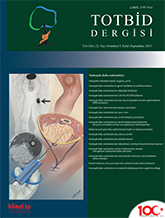
Soft tissue sarcomas (STS) are uncommon, heterogeneous, solid malignant mesenchymal tumors that can arise from cartilage, connective and adipose tissue, peripheral nerves, and blood vessels, and account for approximately 1% of adult malignancies and 15% of childhood malignancies. More than 50 histological subtypes of STS have been identified, each of which exhibits unique clinical and biological characteristics. Magnetic resonance (MR) imaging is primarily utilized for the staging, restaging, evaluation of treatment response, and follow-up of sarcomas, whereas computed tomography (CT) imaging is mostly utilized for the evaluation of distant metastases, especially lung metastases. 18F fluorodeoxyglucose positron emission tomography/computed tomography (F18 FDG PET/CT), a combined imaging technique that provides in vivo imaging of tumor glucose metabolism, can assess both the morphological and metabolic characteristics of tumors and/or metastases. It is a unique imaging technique that plays a crucial role in monitoring. Because sarcomas tend to be tumors with high FDG affinity, F18 FDG PET/CT imaging is frequently used for this tumor group for diagnosis, staging, restaging, and evaluation of treatment response (chemotherapy, immunotherapy, radiotherapy, etc.). The 18F FDG PET/ CT imaging technique can be used to predict the grade of the primary tumor because low-grade (Grade 1) sarcomas have low FDG affinity and high-grade (Grades 2-3) sarcomas have high FDG affinity. In addition, it contributes significantly to the determination of biopsy localization, the evaluation of radiotherapy response, the differentiation of recurrence and secondary radiotherapy changes, and the differentiation of granulation tissue and recurrence after surgery.